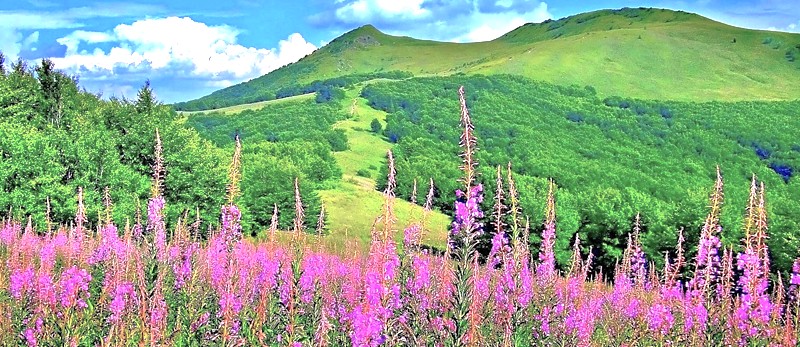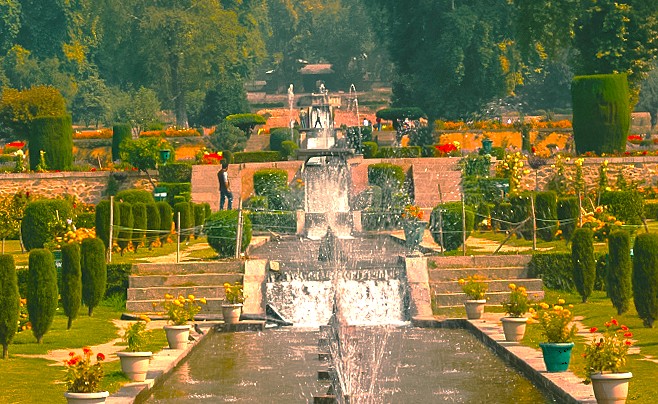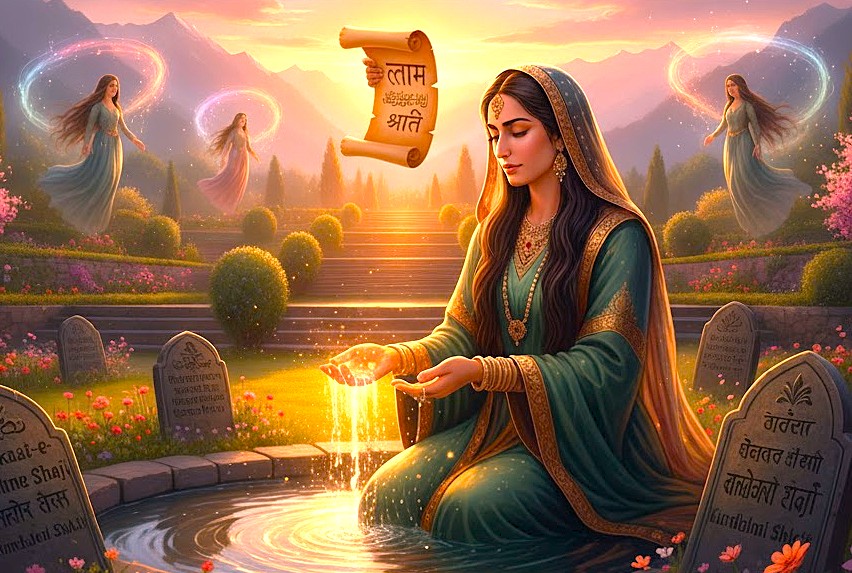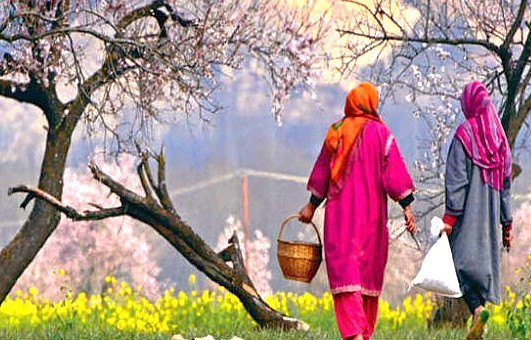Kashmir
Mughal Gardens Srinagar Kashmir
Mother Masala Tours
Mughal Legacy Unfolds
Mughal Gardens Srinagar Kashmir. We’re stepping into a living canvas where Mughal Empire emperors sought to create an earthly Eden. Mughal Gardens refers to several stunning complexes - Shalimar Bagh, Nishat Bagh, and Chashme Shahi - each positioned on the serene banks of Dal Lake and Zabarwan hills. “Bagh” means garden in Persian, reflecting a sophisticated Persian-influenced style that defines the composition and atmosphere of these masterpieces. The original garden, Nishat Bagh, dates to 1633, constructed by Asaf Khan, Prime Minister to Emperor Shah Jahan. Shalimar Bagh, the oldest, was built by Emperor Jahangir in 1619 as an expression of his devotion to Empress Nur Jahan. By the end of the Mughal period, these gardens formed a classic trio adored by royalty and poets.

Mughal Gardens Srinagar Kashmir: Timeless Artifacts
Inside these gardens we find delicate marble pavilions, ancient water channels, and hand-carved fountains - each a unique artifact echoing the artistic energy of the Mughal Empire. The Shalimar Bagh’s black pavilion is notable for its polished stone, intricately carved columns, and classic Persian inscriptions, including Jahangir’s famous words to Nur Jahan. The Shahi houses a spring regarded as sacred, its waters historically prized for their supposed healing properties. The symmetry, axial pathways, and terraced lawns offer restful, spellbinding spaces where emperors once held court or poets composed verses.
Ancient Mosaics: Impeccable Craftsmanship

We become transfixed by the composition of terraced lawns, flowing water, and floral patterns, each garden a masterwork of Persian and Central Asian artistry. Stonework in fountains and cascades reflects the impeccable skill of 17th-century stonemasons. Artisans carved delicate pietra dura mosaics for pavilions and viewing rooms. Jahangir and Shah Jahan appointed master gardeners from Persia to guide craftsmen in teaching the art of arranging trees for a harmonious, immersive effect.
The Pulse of the Local Community
Today, the gardens are alive with the soft laughter of families, couples walking shaded paths, schoolchildren entranced by fountains, and gardeners tending roses with care. Kashmiris value and protect these spaces, using them as a setting for picnics, musical evenings, and family celebrations. Locals are proud to share the gardens’ history and the classic art of floral maintenance.
Capturing the Magic: A Photographic Haven

Mughal Gardens Srinagar Kashmir. Our cameras will capture the cascading fountains as they sparkle in the bright sunlight. The water features form the central artery of the Gardens, flowing down the stone terraces in a continuous, lively rush. We will focus on the classic chinar trees, perfectly in the still lotus pools. This creates a beautiful and symmetrical composition, a truly peaceful and restful scene. We will also photograph the airy pavilions with their delicate, open framework, framed by the snowy peaks of the Zabarwan mountains in the distance.
A Culinary Journey: Savor the Flavour
Nearby, we indulge in refreshing kulfi (saffron ice cream), kahwa (green tea with almonds and cardamom), and bakarkhani (a subtly sweet, flaky bread). Ingredients sourced from the surrounding valley—saffron, honey, dried fruits—yield a sumptuous flavor unique to Kashmiri lands. The tradition of outdoor tea gatherings energizes our afternoons, infusing each day with classic hospitality and reflective calm.
The Connection With the Gods

These beautiful gardens feature deep symbolic nods to paradise as described in classic Persian poetry. We see the cypress tree used to represent eternity and the poplar tree to represent life. The Mughals often invoked Allah’s blessings at the life-giving springheads and within the stone pavilions, making the entire framework a sacred space. The spring at Chashma Shahi is uniquely linked to the revered local saint, Rupa Bhawani, whose blessings are believed to infuse the waters with a special, healing quality. We can also find ancient inscriptions on stone tablets.
Festivals of Devotion: Honouring the Sacred and the Divine
On Nawroz - Persian New Year, March 21, the gardens host groups who commemorate new beginnings with floral arrangements and poetic recitations, echoing the Mughal passion for spring. Urs festivals for local saints often see musical processions along garden paths, where Sufi songs blend with the restful atmosphere. The gardens host Tulip Festival week in April, a celebration swamped with blooms and cultural activity.
Ancient Technologies: Sacred Sound, Geometry & Astrological Influences

Each garden follows the chahar bagh (fourfold) layout, a classic, ancient Persian design principle and sacred geometry. This framework is the core of the garden's beautiful design. We will see the water channels flow with perfect symmetry, an elegant construction that calms the energy and fosters a peaceful, meditative state. The fountains and cascades tune the garden to specific Solfeggio frequencies modeled around repose. Local Sufi tradition claims the sound of the main Shalimar cascade resonates at 528 Hz, a frequency believed to inspire deep relaxation and healing. The garden walls, built of local stone, align precisely with the sun and moon.
Serendipitous Meetings: Beyond the Main Path
Mughal Gardens Srinagar Kashmir. Wandering beyond official walkways, we may meet painters creating classic watercolors, families handcrafting flower garlands, and elderly locals recounting tales of Mughal magnificence. Children collect lotus pods beside old water tanks. Gardeners might show us hidden ponds teeming with frogs, or secret vantage points for watching sunlight through the chinar branches. Every day brings engaging discoveries and energetic, swamped activity.
Resilience and Renewal: Overcoming Adversity’s Challenges

The Mughal Gardens have endured substantial challenges: floods, neglect during periods of political turmoil, and the threat of invasive species. Major restoration works in the 1980s and again after the devastating 2014 floods were a meaningful activity. These efforts revived the old water systems and reestablished rare plantings. Local stories tell of garden staff braving the 2014 monsoon night, a hectic time, to save vulnerable saplings and protect the historic pavilions. This active response was a phenomenon of community spirit.
Urban Legends: Strange Sightings, Myths and Mysteries
Guides share tales of Shah Jahan’s spirit walking Shalimar Bagh by moonlight, or nightingales thought to relay poets’ verses to the living. Some believe Chashme Shahi’s spring grants wishes on Friday mornings. Phantom fragrances and unexplained cool breezes persist in folklore, adding a restful and mesmerizing quality to twilight strolls.
No More Excuses......Because "Almost Did It" Is a Sad T-shirt Slogan

Join us as we experience the spellbinding beauty, classic serenity, and magical moments in these timeless gardens. From the restful lotus ponds to the engaging local tales, each step draws us deeper into this vision of paradise. We will be entranced by the sophisticated artistry of the flowing water, energized by the deep history, and completely immersed in the mystical spell of Mughal Kashmir. This trip is the perfect source for outrageous dinner stories, stunning your friends with disbelief at the incredible composition of nature and elegant construction you witnessed.
Symphony of Generosity: Offerings from Wanderers to Residents
By enjoying these gardens, we help sustain the beauty and livelihoods of local caretakers, artisans, and families. In return, we receive beautiful compositions for our memories, stories of artists and emperors, and peace that lingers long after we leave - ensuring the phenomenon of Mughal gardens endures for future generations.